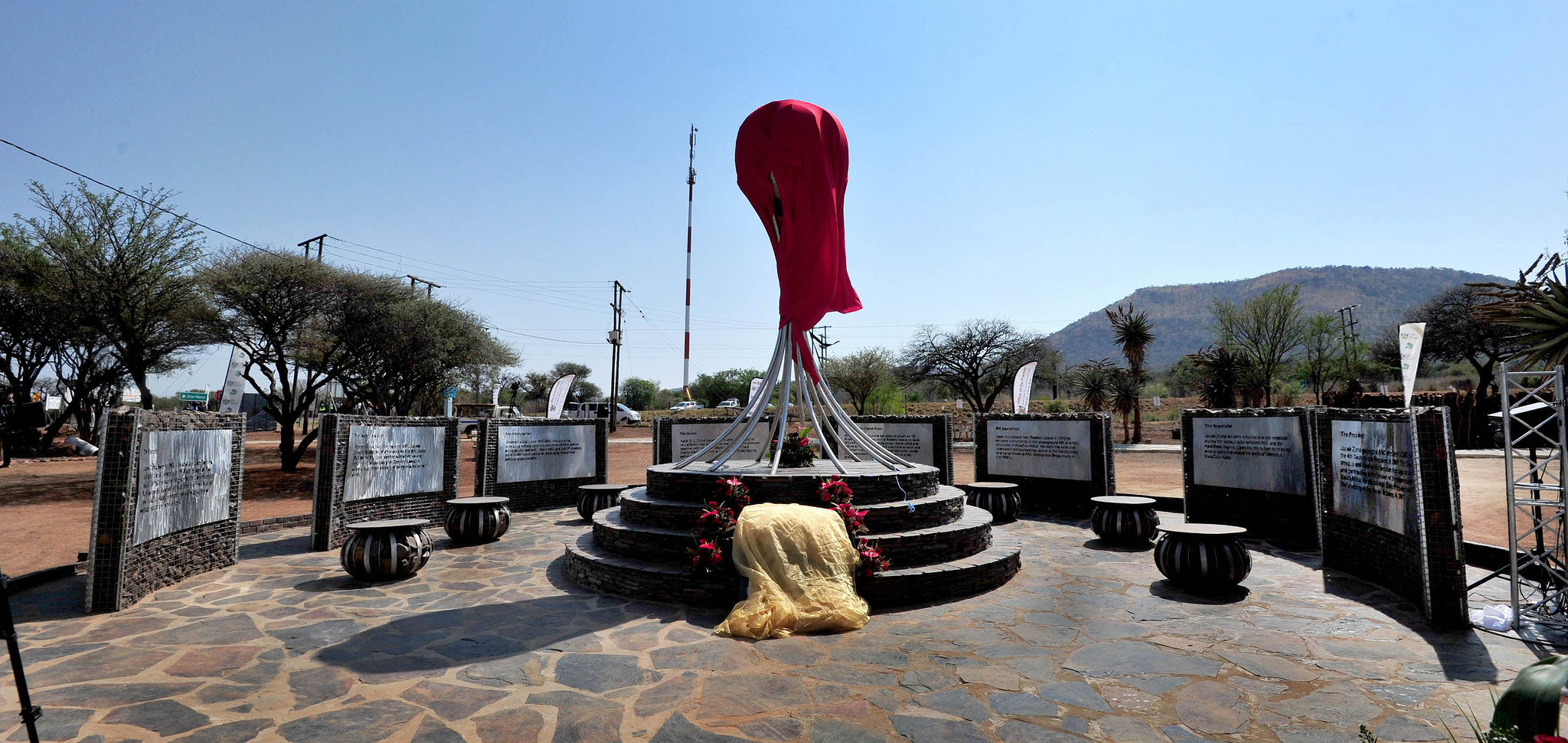
President Zuma Unveils Monument… of Himself, Launches Important New Heritage Site
President Jacob Zuma today officially opened the Groot Marico Heritage Site and the Liberation Heritage Route of Bokone Bophirima… where activists once crossed as they went into exile in countries like Zambia and Tanzania to continue the struggle against apartheid and colonialism. In pictures and inscriptions, the Heritage Site – near Zeerust in the North […]

President Jacob Zuma today officially opened the Groot Marico Heritage Site and the Liberation Heritage Route of Bokone Bophirima… where activists once crossed as they went into exile in countries like Zambia and Tanzania to continue the struggle against apartheid and colonialism.

In pictures and inscriptions, the Heritage Site – near Zeerust in the North West Province – tells the story of President Zuma and 45 other activists who were intercepted by security police at Groot Marico in June 1963… leading to them serving prison terms on Robben Island.
The Groot Marico Heritage Site, featuring prominently the Arrest Site of President Zuma, is being developed as part of the liberation heritage programme of government, aimed at recording, preserving, restoring and promoting all heritage sites which form part of the rich liberation heritage and history of the country.

The site is envisaged as a tourist attraction with various features which have been designed in two phases. The first phase is comprised of a fireball surrounded by eight (8) walls, with each wall inscribed with various stories on President Zuma’s life (see above and below).

There will also be a museum furnished with art effects depicting the area of Groot Marico and the liberation heritage stories, as well as an old police van symbolising apartheid police and the Batswana cultural village.

Sincere thanks to Botswana for its role in the freedom struggle
Today Zuma “sincerely” thanked Botswana for turning a blind eye and letting political activists – from SA and neighbouring countries – use it as a transit point.
“Many Batswana in Botswana spared nothing to give us comfortable passage, refuge and exile in their country, to the point of paying the ultimate price of death, and we pay tribute to these selfless heroes.
“They defined their total freedom by ours, and paid a huge price for that.”

The second phase of the Heritage Site is a house which is designed for use as a venue for small groups of people for meetings and events and would also have a craft centre.
The building and maintenance of the Heritage Site is expected to create much needed jobs in the area and contribute to domestic and international cultural tourism.
Young President Zuma’s Story…
After receiving a train ticket from the ANC, the then 21-year-old Jacob Zuma left Durban for Johannesburg on the 8th June 1963. On the 9th June, together with other young men, they left Johannesburg for Zeerust/Lobatse border with the intent of crossing the border into exile in Botswana.
President Zuma and the other MK recruits were travelling in four different minibuses which were intercepted by police, leading to their arrest and detention in Zeerust and Groot Marico police stations.

Today Zuma recalled the events leading up to the arrest – including his driver taking a short cut and getting lost on the night – and said: “I am giving you snippets because I am going to write a book with the greatest details including what happened.”
After being sentenced to 10 years in prison on 12 August 1963, all recruits were sent to Robben Island via Leeuwkop and Colesberg prisons. Handcuffed and placed on leg irons, they were subjected to harsh and inhumane treatment.
Upon his release from Robben Island in 1973 after 10 years in prison, President Zuma became instrumental in the underground MK and ANC structures in KwaZulu-Natal. He went into exile and underwent military training in the then Soviet Union, ending up heading the ANC’s Intelligence Department in the 80’s.

President Zuma became a trusted and key negotiator during the various talks between ANC and the apartheid regime. Upon his return from exile he led peace talks that ended the political violence in KwaZulu-Natal.
President Jacob Zuma was elected ANC President in 2007 and the fourth democratic President of the Republic in 2009 and was re-elected for a second term in 2014.
The Groot Marico Heritage and Arrest Site is dedicated to the liberation heritage struggle and to the contribution to the freedom of the oppressed in South Africa by the countless activists who crossed through the Zeerust/Lobatse border into exile.
Source: www.thepresidency.gov.za; All photos: GCIS
Twitter Reacts…
This really cost R6m?! 😊🙃#JacobZumaMonument pic.twitter.com/7vye35ytUm
— Ulrich Janse van Vuuren (@UlrichJvV) October 4, 2017
https://twitter.com/Ashley_Dorothy/status/915557316799467520
The DA Reacted to the Jacob Zuma Monument with these tweets:
The Gupta Compound in Saxonwold is the real #JacobZumaMonument
A monument to corruption & unemployment.
RETWEET if you agree! pic.twitter.com/1mKkCgwSge
— Democratic Alliance (@Our_DA) October 4, 2017
Residents of Groot Marico, NW have no running water.
But at least they have a huge, shiny #JacobZumaMonument… https://t.co/54SftBUcQY pic.twitter.com/7aFBTVD4dZ
— Democratic Alliance (@Our_DA) October 4, 2017
